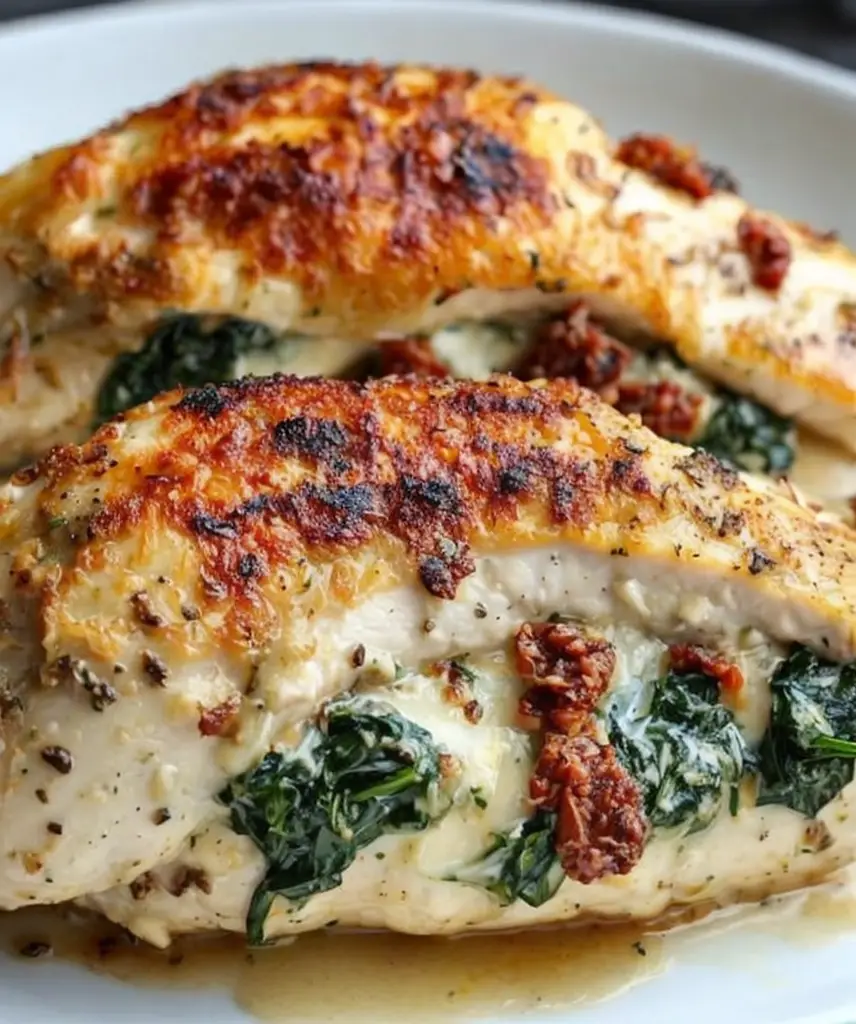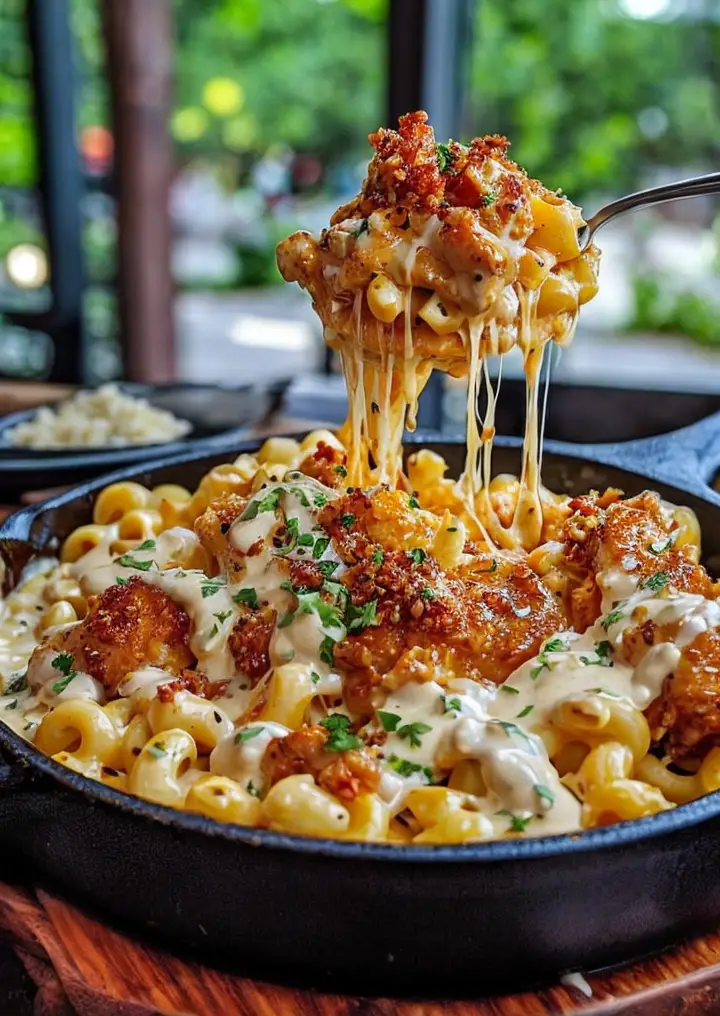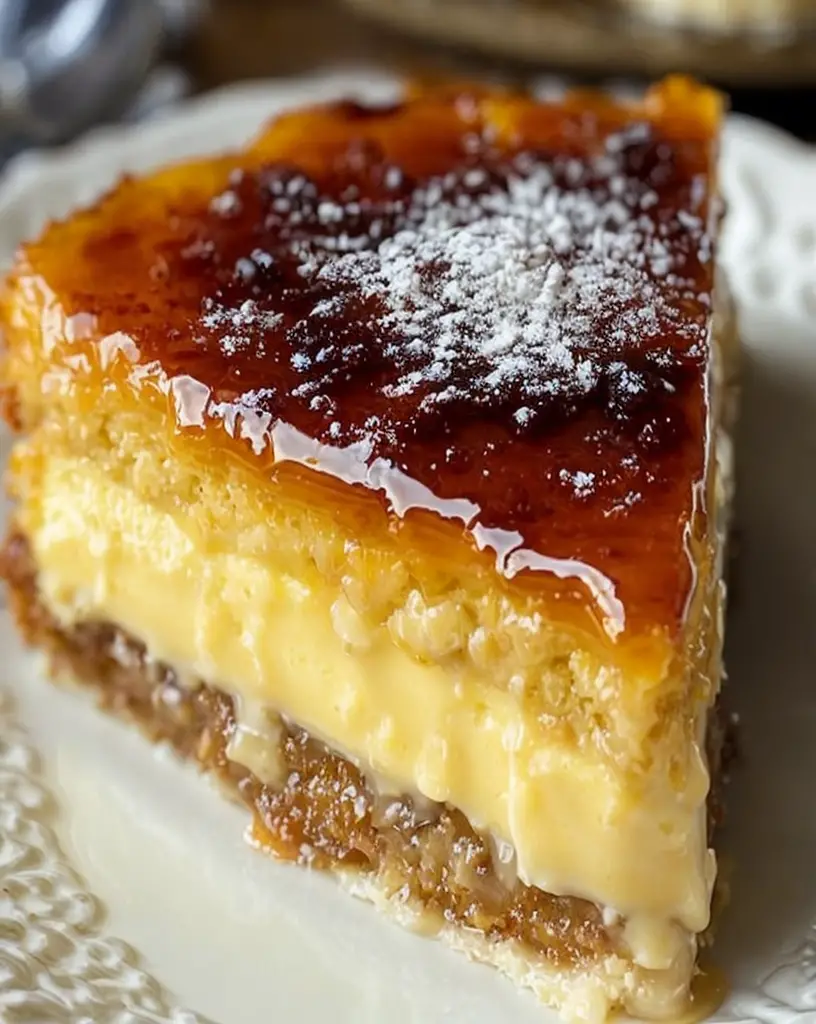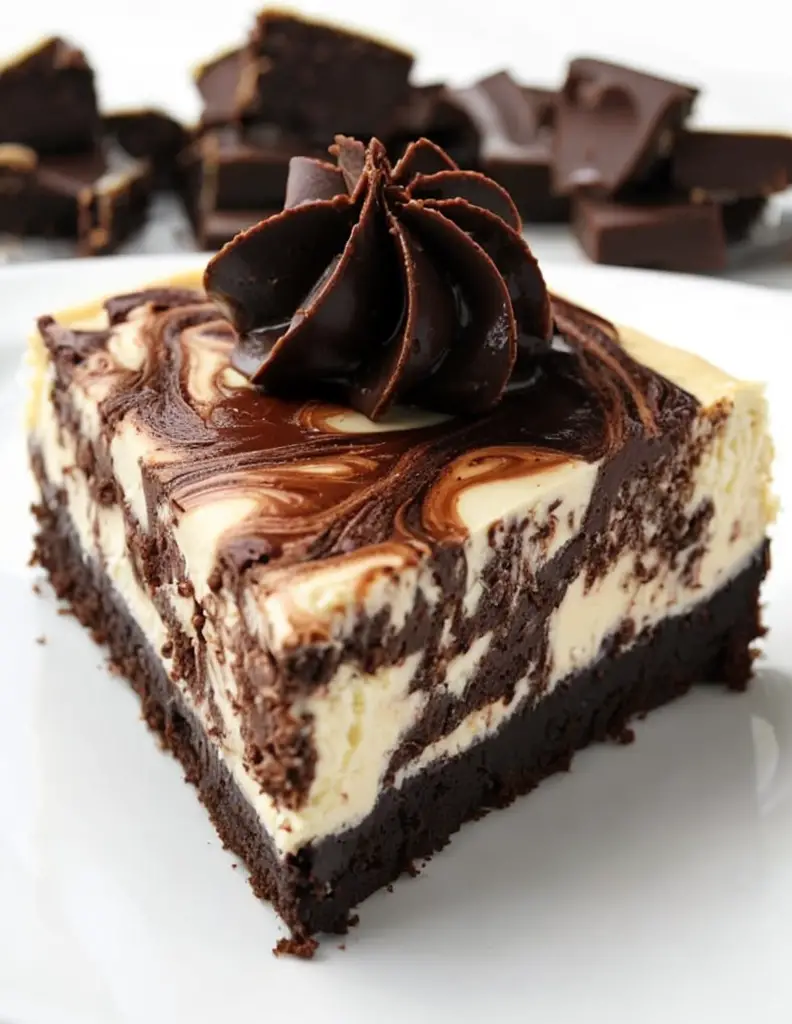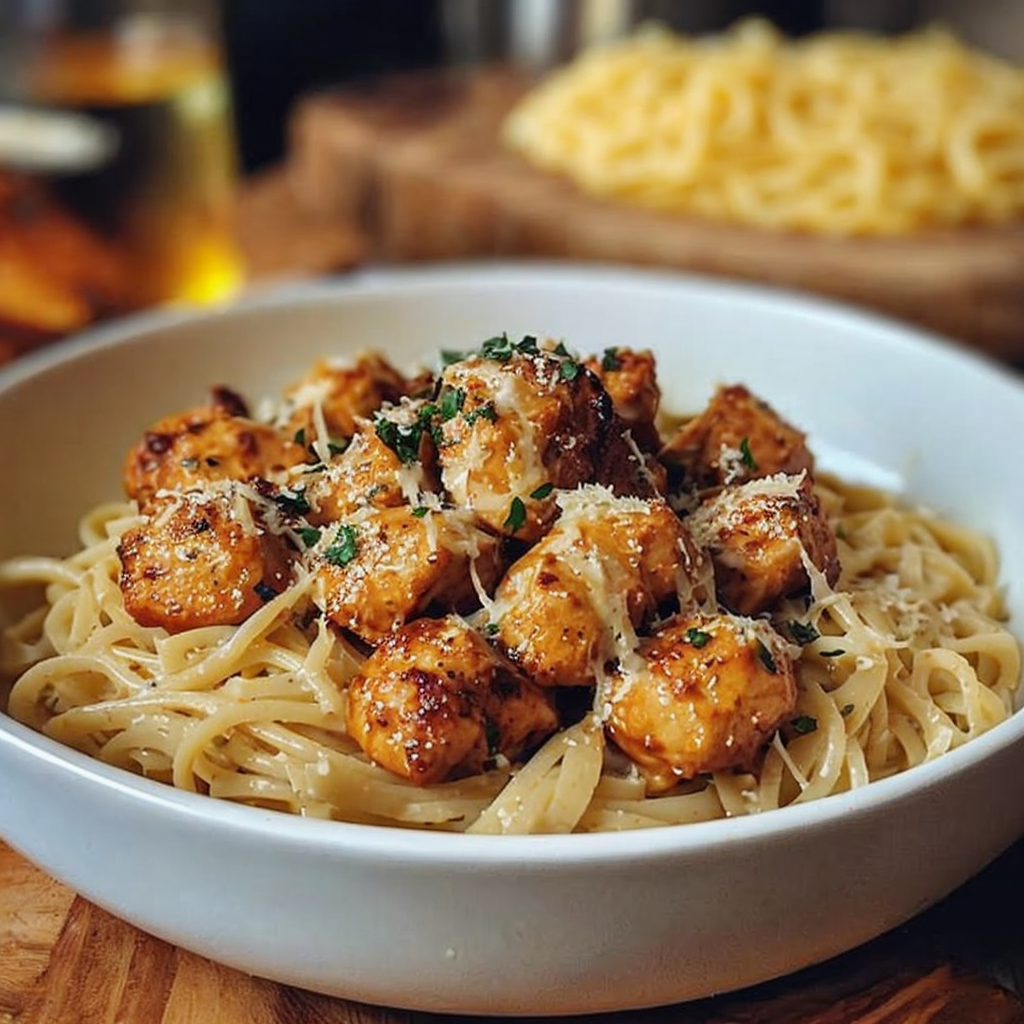Stuffed Chicken Breasts with Spinach and Sun-Dried Tomatoes: A Savory Delight
Indulge in the delightful combination of tender chicken breasts stuffed with a savory mixture of spinach, sun-dried tomatoes, and creamy cheese. This stuffed chicken recipe is more than just a meal; it’s an experience that envelops your senses with vibrant flavors and stunning presentation. The juicy chicken, paired with the nutrient-rich spinach and the sweet-tart sun-dried tomatoes, offers a burst of taste with every bite. Whether it’s a family dinner or a special occasion, this dish will impress and satisfy everyone at the table.
As the chicken breasts bake, they become infused with the rich flavors of the filling, while the aroma of garlic and spices waft through your kitchen, inviting everyone to gather around. This recipe is as visually appealing as it is tasty, with the vibrant greens of the spinach and the deep red of the tomatoes creating a beautiful contrast against the golden-brown chicken. Get ready to create a masterpiece that looks almost too good to eat!
Quick Recipe Highlights
- Flavor Profile: The combination of savory chicken, tangy sun-dried tomatoes, and earthy spinach creates a flavor explosion that’s both hearty and fresh.
- Texture: The chicken is succulent and tender, while the stuffing adds a delightful creaminess that contrasts beautifully with the meat.
- Aroma: The aroma of garlic and baked chicken fills the air, heightened by the fragrant herbs used in the stuffing.
- Visual Appeal: Golden brown chicken stuffed with vibrant greens and reds is not only delicious but also stunning on the plate.
- Skill Level Needed: Moderate; some experience with chicken preparation and stuffing is helpful for the best results.
- Special Equipment: A sharp knife for cutting the chicken, a skillet for sautéing, and a baking dish for finishing in the oven.
Recipe Overview
- Difficulty Level: This recipe is marked as moderate, as it requires some knife skills to slice and stuff the chicken breasts carefully, but the steps are straightforward and rewarding.
- Category: Dinner; this dish is perfect for an inviting evening meal or entertaining guests.
- Cuisine: This recipe is influenced by Mediterranean flavors, where sun-dried tomatoes and spinach are popular ingredients.
- Cost: This recipe is cost-effective, with ingredients easily found at any grocery store, making it accessible for most home cooks.
- Season: Ideal for all seasons, this dish is especially comforting during autumn and winter family gatherings.
- Occasion: Perfect for anniversaries, dinner parties, or as a cozy family meal any night of the week.
Why You’ll Love This Recipe
The taste and texture appeal of stuffed chicken breasts are unmatched. The savory chicken envelops a creamy stuffing that pops with fresh flavors, making it a dish that caters to various palates. The blend of creamy cheese with the slight crunch of sun-dried tomatoes and the softness of cooked spinach creates a balanced mouthfeel that satisfies.
For those who value convenience in the kitchen, this recipe shines. With a relatively short prep time and straightforward cooking method, you can have this sumptuous dish on the table in under an hour, making it a go-to recipe for busy weeknights or intimate dinner gatherings.
In addition to its delightful flavors, this stuffed chicken also offers nutritional advantages. Chicken is an excellent source of protein, while spinach provides iron and vitamins A and C, making it a wholesome choice for any meal. The sun-dried tomatoes pack an antioxidant punch, enhancing the overall health benefits of this dish.
Serving stuffed chicken breasts is a joy in social settings. They provide an element of sophistication and are sure to impress guests at any dinner party. This dish invites conversation and complements various side options, allowing for an engaging dining experience.
Lastly, the cost-effectiveness and accessibility of this recipe are compelling reasons to try it. With simple ingredients that are easy to find, you can create a gourmet meal without breaking the bank, proving that great flavors can come from humble origins.
Historical Background and Cultural Significance
The origin of stuffed chicken dishes can be traced back to ancient cuisines across various cultures, where the practice of enhancing meats with flavorful fillings became a staple. In Mediterranean regions, for instance, the connection between fresh produce and protein is central to culinary traditions, reflecting the local agriculture and the love for wholesome, hearty meals.
Culturally, stuffed chicken has been celebrated for centuries. It often represents hospitality and care, showcasing the cook’s effort to provide a rich and satisfying meal. Special occasions in many societies often feature stuffed proteins as a central dish, illustrating their importance in communal dining experiences.
The evolution of stuffed chicken recipes is fascinating. Variations have emerged globally, adapting to local ingredients and cooking methods. Today, stuffed chicken combines classic techniques with modern flavors, making it a versatile dish suitable for various culinary preferences.
Regional variations abound; in Italy, for example, you might find chicken breasts stuffed with prosciutto and herbs, highlighting the unique flavor profiles of different areas. Such adaptations emphasize the dish’s flexibility while honoring its cultural roots.
Ingredient Deep Dive
Chicken Breasts: Chicken is a staple protein globally, with a long history of being a versatile and nutritious source of food. When selecting chicken breasts, look for those that are firm, plump, and free of any blemishes. Nutritionally, chicken breasts offer lean protein, crucial for muscle health and weight management. They can be stored in the fridge for 1-2 days or frozen for several months, ensuring they’re always available for a hearty meal. For substitutions, turkey breasts can work well, offering similar textures and flavors.
Spinach: A staple in many cuisines, spinach has been celebrated since ancient times for its rich nutritional profile and versatility in cooking. Packed with vitamins and minerals, spinach supports healthy immune function and bone health. Choosing vibrant, fresh spinach leaves with no discoloration is essential, and it’s best stored in the refrigerator. Spinach can also be substituted with other leafy greens like kale or Swiss chard for diverse flavor profiles.
Sun-Dried Tomatoes: These tomatoes have a long history, particularly in Mediterranean diets where they are celebrated for their concentrated flavors. Rich in antioxidants, sun-dried tomatoes enhance the nutritional value of dishes. When selecting, prioritize those packed in oil, as they retain moisture and flavor, and store them in a cool, dry place. If sun-dried tomatoes are unavailable, fresh tomatoes can be roasted as an alternative, though the flavor will differ.
Cheese: Cheese has a rich heritage in global cuisines, providing depth and creaminess to many dishes. In this recipe, a cheese like feta or mozzarella adds flavor and moisture. For the freshest taste, choose blocks of cheese and shred them yourself. Options for substitutions include dairy-free alternatives or ricotta cheese, which can yield a different yet delightful texture.
Common Mistakes to Avoid
- Cutting the chicken breasts too thinly can cause them to dry out during cooking. Always leave enough meat for a juicy stuffing.
- Overstuffing the chicken breasts can lead to a messy and uneven cooking process. Aim for a moderate amount of stuffing, ensuring even cooking.
- Not properly seasoning the stuffing might result in bland flavors. Make sure to season each component generously.
- Failing to let the stuffed chicken rest before slicing can cause the juices to leak out, making the chicken dry.
- Using pre-shredded cheese may result in a less creamy texture due to added preservatives. Always opt for block cheese when possible.
- Neglecting to preheat the oven can lead to uneven cooking. Ensure your oven reaches the desired temperature before placing the chicken in.
- Skipping the browning step can miss the opportunity for added flavor. Sear the chicken on the stove before baking for the best taste.
- Not checking the internal temperature can result in undercooked chicken. Always use a meat thermometer to ensure a safe temperature.
- Using low-quality sun-dried tomatoes can detract from the overall flavor. Invest in good quality products for the best results.
- Not pairing the dish with suitable sides may lead to an unbalanced meal. Consider options that complement the chicken’s flavors to enhance the dining experience.
Essential Techniques
The technique of stuffing chicken breasts is vital not just for flavor but for ensuring even cooking. To master this, use a sharp knife to create a pocket without cutting all the way through. Common pitfalls include overstuffing, which can cause the chicken to burst during cooking. A good visual cue for success is to press gently on the filled chicken; if it feels firm but not overly tight, it’s likely just right.
Searing the chicken before baking enhances flavor and texture. This technique allows the outside to develop a rich, golden-brown crust, locking in moisture. Common mistakes include skipping this step, which can result in a less flavorful dish. Look for a sizzling sound and a golden color as visual cues for success.
Pro Tips for Perfect Stuffed Chicken Breasts
– Choose the freshest ingredients possible for the stuffing to maximize flavor and nutritional benefits.
– For added moisture, consider marinating the chicken breasts in a simple mixture of olive oil, lemon juice, and herbs for a couple of hours before cooking.
– If you have leftover stuffing, bake it in a small dish alongside the chicken for extra serving options.
– Use twine to tie the chicken breasts if they are prone to opening during cooking; this keeps the stuffing inside.
– Consider adding a splash of white wine to the baking dish to create a flavorful steam that moistens the chicken.
– For a crispy topping, sprinkle breadcrumbs or crushed nuts over the chicken breasts before baking for added texture.
– Experiment with different herbs in the stuffing to customize the flavor profile to your liking.
– Always let the stuffed chicken rest after cooking to minimize juice loss when cutting.
Variations and Adaptations
Regional variations of stuffed chicken can bring unique flavors and flair. In Greek cuisine, adding olives and feta cheese creates a Mediterranean twist, enhancing the savory experience. Seasonal adaptations are just as fun; consider incorporating roasted vegetables during fall or fresh herbs in spring for a lighter touch. Dietary modifications can also be made to cater to specific needs: use quinoa as a gluten-free stuffing base or decrease cheese for a healthier alternative.
Flavor variations are limitless; try a spicy southwest twist with jalapeños and pepper jack cheese or an Italian-inspired mix with basil and parmesan. Texture modifications may include adding toasted nuts for crunch or adding cream cheese to the filling for extra creaminess. Presentation alternatives can elevate your dish further; consider serving with a vibrant coulis or a salad arrangement to impress your guests.
Serving and Presentation Guide
For plating, take care to slice the stuffed chicken breasts diagonally to showcase the colorful filling. Consider using a large, white plate to make the colors pop. Garnishing with fresh herbs like parsley or basil adds a touch of freshness and color. Traditional accompaniments like roasted vegetables or a light salad are great options to balance the richness of the chicken.
Modern serving suggestions may include a drizzle of balsamic reduction or a side of quinoa for a contemporary twist. Temperature considerations are essential; serve the stuffed chicken warm but not steaming to enhance the dining experience. For portion control, aim for a stuffed chicken breast per person in addition to side dishes to maintain a balanced meal.
Wine and Beverage Pairing
For perfect wine pairings, opt for a crisp white wine like Chardonnay or Pinot Grigio, which complements the savory flavors of the chicken and the stuffing. A light red, such as Pinot Noir, can also work well for those who prefer red options. For non-alcoholic alternatives, a sparkling water with a lemon wedge is elegant and refreshing.
Coffee or herbal tea can enhance the meal experience as a post-dinner beverage; a light green tea can cleanse the palate effectively after the meal. Always consider serving wines chilled to enhance the flavors and the overall dining experience.
Storage and Shelf Life
When storing leftover stuffed chicken, allow it to cool completely before placing it in an airtight container. The chicken can be refrigerated for 3-4 days, retaining its quality if stored correctly. If you want to extend its shelf life, consider freezing individual portions, which can last for up to 3 months.
Signs of spoilage include any off-smells, slimy textures, or changes in color. For reheating, use an oven set at 350°F (175°C) to regain moisture; you can cover the chicken with foil to prevent it from drying out. If freezing, let it thaw overnight in the refrigerator before reheating for the best texture and flavor.
Make Ahead Strategies
For a make-ahead approach, prepare the stuffing a day in advance and store it in the refrigerator. You can also assemble the stuffed chicken, wrap it tightly in plastic wrap, and store it for up to 24 hours before baking. This prep timeline allows flavors to meld beautifully before cooking.
Storage between steps is crucial; keep the assembled chicken in a cool spot before baking to maintain freshness. Assess the quality impact of letting it rest longer, checking the protein for any signs of spoilage. When ready to cook, simply follow the original baking directions.
If using fresh herbs or garnishes, add those right before serving to maintain their vibrant colors and flavors.
Scaling Instructions
Halving the recipe is straightforward; just adjust the ingredient quantities accordingly and use fewer chicken breasts. Doubling or tripling the recipe requires ensuring your baking equipment is appropriately sized to accommodate larger portions, like using multiple baking dishes if necessary.
Timing modifications may include slightly adjusting cooking times, especially with larger quantities; always check the internal temperature to ensure all the chicken is cooked through. For scaling leftovers, consider how much your guests will eat and adjust accordingly to avoid waste, keeping in mind that stuffed chicken holds up well for refrigeration.
Nutritional Deep Dive
In terms of macro breakdown, a serving of stuffed chicken typically offers high protein content, making it an excellent choice for muscle repair and growth. The contribution of vegetables in the stuffing adds fiber, which aids digestion and promotes satiety.
Micronutrient analysis highlights this dish’s richness in vitamins A and C from spinach, essential for immune health, along with calcium from cheese. The health benefits extend to promoting overall vitality, supporting bone health, and enhancing skin appearance with a balanced diet.
Understanding portion analysis is critical; balancing protein with vegetables and healthy fats can aid in weight management efforts. This dish can fit into various meal plans, ensuring that flavors and nutrients are available in one delicious package.
Dietary Adaptations
For gluten-free adaptations, substitute regular breadcrumbs with gluten-free options or omit them altogether. For dairy-free diets, consider using almond cheese or nutritional yeast in place of traditional cheeses.
For vegan adaptations, replace chicken with firm tofu or portobello mushrooms, and utilize legumes or grains mixed with spices as the stuffing base. Low-carb and keto options are possible by using zucchini boats or bell peppers instead of chicken; this not only reduces carbs but spices up the dish creatively.
Further dietary modifications could apply to those following paleo, low-FODMAP, or specific diets; for paleo enthusiasts, simply omit grains and emphasize fresh ingredients. Experimenting with different ingredients to tailor the dish means it’s accessible for many dietary needs without compromising taste.
Troubleshooting Guide
If the chicken’s texture seems dry, check cooking times and methods; overcooking is often the culprit. For flavor balance issues, assess seasoning added to the stuffing and the meat. If a specific herb or spice lacks intensity, experiment with fresher versions.
Common equipment challenges include using inadequate pans that may lead to uneven cooking. Ensure the oven is accurate; a thermometer can help with this. Ingredient substitutions might affect taste; when in doubt, consult guidelines for balance while preserving flavor integrity.
Timing concerns often crop up; always prepare sides and accompaniments ahead of time, allowing you to focus less on the chicken. Staying organized helps to avoid delays and missteps.
Recipe Success Stories
Community feedback highlights how this stuffed chicken recipe has become a family favorite, with many sharing their variations and personal touches. Readers have reported success with altering the stuffing, such as adding different cheeses or vegetables, catering to their tastes.
Adaptation stories reveal that some have embraced this recipe for holiday gatherings, showcasing how versatile it is and how well it holds up in larger batches. The ease of preparation while still delivering impressive results has encouraged many to try cooking at home more frequently.
Photography tips from the community suggest presenting the dish on rustic wooden boards or elegant dinner plates to capture its beauty effectively. Snapping pics of the colorful stuffing peeking through slices always garners attention on social media.
Frequently Asked Questions
To prevent dry chicken, ensure you don’t overcook it and allow it to rest after baking. Monitoring the internal temperature with a meat thermometer can also help you achieve juicy results.
2. Can I prepare this recipe ahead of time?
Yes! You can assemble the stuffed chicken breasts and store them in the fridge for up to 24 hours before cooking to enhance flavors and convenience.
3. What can I serve with stuffed chicken?
A variety of sides complement stuffed chicken beautifully, including roasted vegetables, fresh salads, or creamy mashed potatoes for a well-rounded meal.
4. How do I store leftovers?
Allow any leftovers to cool before placing them in airtight containers; they can be refrigerated for 3-4 days or frozen for longer storage.
5. What temperature should stuffed chicken be cooked to?
The internal temperature of the chicken should reach 165°F (74°C) to ensure it is fully cooked and safe to eat.
6. Can I use frozen spinach instead of fresh?
Yes! Frozen spinach can be a great alternative, just make sure to thaw and drain excess moisture beforehand.
7. How can I make this dish gluten-free?
Simply substitute the bread crumbs in the stuffing with gluten-free options or skip them altogether for a healthy, gluten-free version.
8. What if I don’t have sun-dried tomatoes?
If sun-dried tomatoes are not available, you can use fresh tomatoes, though the flavor profile will slightly change. Roasted red peppers serve as another flavorful alternative.
9. Can I make the stuffing spicy?
Absolutely! You can add chopped jalapeños, chipotle peppers, or any preferred spicy seasoning to the stuffing to kick up the heat.
10. How do I know the chicken is properly stuffed?
The chicken is properly stuffed when there is enough filling without causing the chicken to tear. A gentle squeeze should keep the stuffing neatly in place.
Additional Resources
Explore related recipes for more delightful creations. For example, try our Spinach and Ricotta Stuffed Shells for a pasta twist or Roasted Vegetable Quinoa Salad for a light side. Technique guides focusing on chicken prep or mastering stuffing techniques can add great value to your cooking repertoire.
For ingredient information, learning about the health benefits and best cooking practices for popular vegetables and proteins will enhance your culinary skills. Lastly, equipment recommendations for essential kitchen tools will make your cooking experiences more streamlined and enjoyable.
Join the Conversation
We invite you to share your thoughts on this recipe on social media! As you try this stuffed chicken dish, use hashtags to connect with others making similar creations. Share your photography tips and successes in our community forums, and don’t hesitate to leave feedback or suggest variations based on your experiences. Engaging with fellow cooking enthusiasts enriches the journey of culinary exploration.
The Recipe
Stuffed Chicken Breasts with Spinach and Sun-Dried Tomatoes
Serves: 4
Prep Time: 15 mins
Cook Time: 30 mins
Total Time: 45 mins
Kitchen Equipment Needed
- Sharp knife
- Skillet
- Baking dish
Ingredients
- 4 chicken breasts
- 1 cup fresh spinach, chopped
- ½ cup sun-dried tomatoes, finely chopped
- 1 cup cheese (feta or mozzarella), shredded
- 2 cloves garlic, minced
- 1 teaspoon Italian seasoning
- Salt and pepper to taste
- Olive oil for cooking
Directions
- Preheat your oven to 375°F (190°C).
- In a skillet, heat olive oil over medium heat; add garlic and sauté until fragrant.
- Stir in the chopped spinach and sun-dried tomatoes, and cook until spinach wilts. Remove from heat.
- In a bowl, mix the sautéed vegetables with the shredded cheese and Italian seasoning.
- Use a sharp knife to cut a pocket into each chicken breast without cutting all the way through.
- Stuff each chicken breast with the prepared filling. Season the outside with salt and pepper.
- In the same skillet, sear each side of the chicken breasts for about 3-4 minutes until golden brown.
- Transfer the seared chicken to a baking dish and bake for 20-25 minutes or until the internal temperature reaches 165°F (74°C).
- Allow to rest for 5 minutes before slicing and serving.
Recipe Notes
- Feel free to experiment with additional spices or vegetables in the stuffing.
- Leftover stuffing can be baked separately for extra side options.
